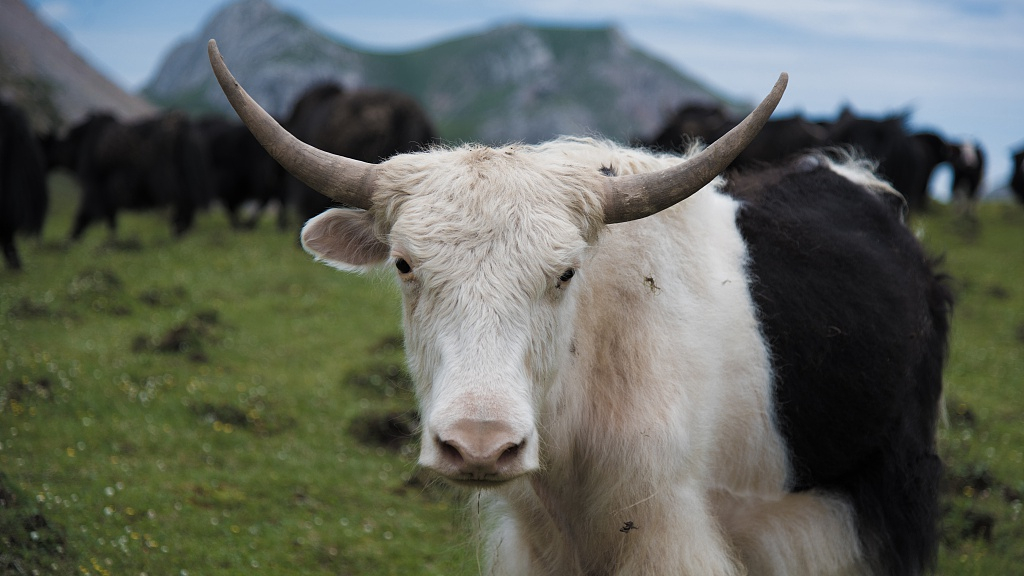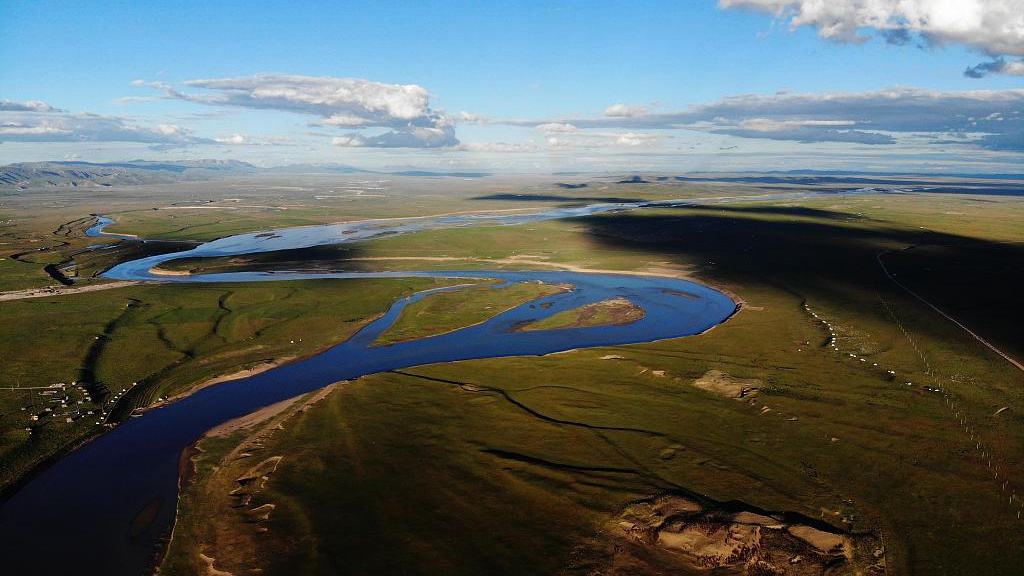

Worrying about the safety of their yaks is no longer a headache for herders in northwest China's Gannan Tibetan Autonomous Prefecture as the plastic-scattered prairie has restored its original look.
"It was such a headache. Yaks and sheep would die after mistakenly eating plastic trash," said 42-year-old Ponge.

Plastic on the grassland is easy to be mistaken for food by yaks. /VCG Photo
Sitting on the border of Gansu, Qinghai and Sichuan provinces, Gannan serves as a major water conservation area for the Yellow River, the second-longest river in China. Featuring various landscapes and diverse cultures, it is an acclaimed attraction for both domestic and international tourists.
Over the past few decades, low-cost plastic bags have been widely used in the region and a large quantity of them were randomly discarded, polluting lakes, wetlands and other water resources.
The "white pollution" had been a nightmare until April 2013, when the local government banned the production, sale and use of plastic bags within its 45,000 square kilometers of land.

Gannan is a major water conservation area for the Yellow River. /VCG Photo
Ponge fully supported the ban but also knew that it would take some time to realize this goal.
"People had been using plastic bags for decades, it was not easy for them to give up the habit," Ponge said.
More efforts were therefore put in its implementation. Local authorities intensified inspection of supermarkets, shopping malls and other retail locations, and took the initiative to distribute environmentally-friendly shopping bags to break the plastic bag addiction.
The face of the grassland finally began to change after a year of endeavors. Grass and plants began to take root in the soil once covered by plastic trash. Better and richer food for animals made local herders realize that the prohibition of plastic bags was indeed for their own good.
Now shopping with a cloth bag has become a fashion in the region. But locals want to take a step further and make their home a real tourist heaven.
A prefecture-level cleaning campaign was inaugurated in 2015 to deal with littered garbage, livestock feces and sewage to make Gannan a "garbage-free prefecture."
In addition, a total of 10 billion yuan (about 1.4 billion U.S. dollars) was earmarked to upgrade local infrastructure and public services in over 1,000 villages.
A beautified Gannan has lured more visitors. About 6.2 million tourists visited Gannan in the first half of 2019, bringing a total tourism revenue of over three billion yuan, a year-on-year growth of 10.8 percent and 8.4 percent respectively.

Tourists come to Gannan for its culture and nature. /VCG Photo
Data shows that 41,400 local residents from 9,740 households have been lifted out of poverty through tourism. Gannan's poverty-reduction model was even listed as a typical case by the World Tourism Alliance.
The story of Gannan is just a small mirror of a nationwide clean-up campaign in China's rural areas. Over 80 percent of the villages across the country have launched such campaigns since the end of last year, disposing of over 40 million tonnes of garbage, 30 million tonnes of mud in ditches and ponds, and rubble in 40 million locations, according to the Ministry of Agriculture and Rural Affairs.
The central government has also allocated seven billion yuan to help rural areas press ahead with the toilet revolution since last year. And another three billion yuan was allocated to clean up rural areas in central and west China regions.
"Change can be tough but we are glad to see the campaign is paying off," said Yu Chenghui, Gannan's Party chief.
(Cover image via VCG.)
(If you want to contribute and have specific expertise, please contact us at nature@cgtn.com.)

Copyright © 2018 CGTN. Beijing ICP prepared NO.16065310-3
Copyright © 2018 CGTN. Beijing ICP prepared NO.16065310-3